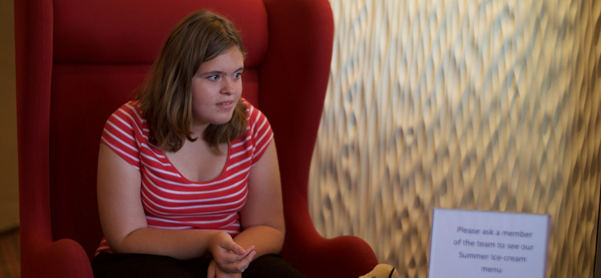Physical Characteristics of Kleefstra Syndrome
Some people believe that the descriptions of physical characteristics of a syndrome are not helpful to individuals; however, we believe that knowing the physical characteristics is important. To read about why we have included physical characteristics on this website go to the key topics area and select 'physical characteristics' from the drop down menu.
It is important to note that children with Kleefstra syndrome vary in the number of physical characteristics that they show.
Facial Features
- Widely spaced eyes
- Eyebrows that grow together,
- Midface hypoplasia (when the centre of the face develops more slowly than the eyes, forehead and jaw)
- Protruding tongue
- Nostrils that open to the front rather than downward
- Everted lower lip (rolled out lips)
- A large tongue
- Protruding lower jaw
Other physical characteristics
- High birth weight (the average birth weight is 3.5 kg) and childhood obesity.
- Congenital (from birth) heart and kidney problems – a high number of individuals with Kleefstra Syndrome have congenital heart defects (around half of individuals). Kidney defects are less common (1-3 in 10 individuals).
- Hypotonia (poor muscle tone) – hypotonia means that babies appear floppy.
- Minor genital anomalies in males.
- Catatonia (particularly in rigidity of arms and repetitive movement of the fingers).
The information on this website was developed in collaboration with www.kleefstrasyndrome.org. This is the parental support group for Kleefstra, a well-developed community with an active facebook group and parent support conference. Please visit their website for further information and to get in touch with families of individuals with Kleefstra syndrome.




